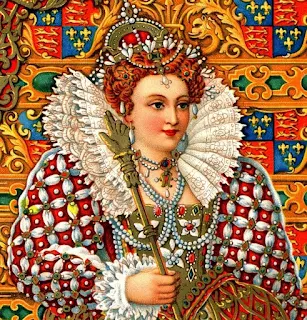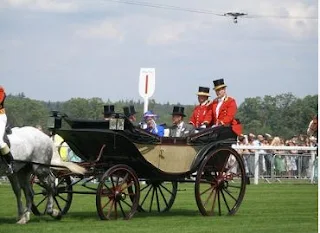The British Monarchy, sometimes known as the United Kingdom Monarchy, is one of the most long-serving royal dynasties in the world. The royal bloodline has been carried on for centuries, with successive generations of descendants of the first Queen ascending to the throne.
The monarchy has been extremely productive and fruitful, leaving an indelible mark on the world. The Queen is the British government's Head of State and used to control the entire world, albeit her powers have been curtailed.
It is still well-known and respected, and it is regarded as one of the world's wealthiest families. Some unique and fascinating information regarding the royal family can be found deep within the British monarchy's history. Here are several examples: Some of the most fascinating facts about the British monarchy are included here.
1. There are no surnames in the Royal Family
The royal family's ancestry, strangely yet intriguingly, does not utilize surnames like the rest of the population. Instead, they call themselves by surnames that signify their families or dynasties. Up until 1917, the surname Saxe-Coburg-Gotha was the first to be used.
King George V decreed in 1917 that all male descendants of Queen Victoria shall bear the surname "Windsor." In 1960, Queen Elizabeth II and Prince Philip chose a new surname for the offspring, Mountbatten-Windsor, with Prince Philips himself taking the surname Mountbatten.
Those having the titles of Prince, Princess, or Royal Highness were the only ones who were exempt.The full name of Prince Williams, the son of Prince Charles and Princess Diana of Wales is Prince William Arthur Philip Louis of Wales, while his brother Prince Harry is called Prince Henry Charles Albert David of Wales.
2. The Royal family appears to have a soft spot for those with common names
The names of the wives married to the Princes reflect this. There have been five Queen Catherines in the genealogy of the monarchy so far. By the time Prince William ascends to the throne, his wife Kate Middleton – also known as Princess Catherine – will have become the family's sixth Queen Catherine.
Queen Catherine of Valois (wife of Henry V), Queens Catherine Howard, Catherine of Aragon, and Catherine Parr (wives of Henry VIII), and Queen Catherine of Braganza (wife of King Charles II) were all in the same line.
3. The current queen is the second-longest-serving monarch in the British monarchy's history
Queen Elizabeth II became the royal family's 40th queen when she ascended to the throne in February 1952. She is the British monarchy's second-longest-serving monarch, having served for sixty-one (61) years.
Queen Victoria, who ruled for 63 years, is the only one who has served longer. King George III, who reigned for 59 years, King James VI of Scotland, who reigned for 58 years, and King Henry III, who reigned for 56 years, are among the monarchs who reigned for more than fifty-four years.
4. Camilla, Duchess of Cornwall, is number four
Princess Diana of Wales was the first wife of Prince Charles of Wales. They married in a formal ceremony, but Princess Diana died soon after. Later, Prince Charles married Camilla, Duchess of Cornwall, in a formal ceremony. Princess Camilla has chosen not to use the term "Princess" out of respect for Princess Diana, who died in 1997.
5. The Queen's talks with the Prime Minister on Tuesdays
The Queen, as Head of State, has a weekly audience with the Prime Minister in order to maintain constant communication with him. When she is in London, this happens on occasion. The queen has a special relationship with the Prime Minister, regardless of which political party he or she represents.
Although the queen stays politically neutral, she has a role in the mechanics of calling a general election. The Queen follows the advise of her ministers as well. Winston Churchill, Sir Anthony Eden, Harold Macmillan, Sir Alec Douglas-Home, Harold Wilson, Edward Heath, James Callaghan, Margaret Thatcher, and so on.
6. The Current Royal Family's History
In November 1947, five years before she became queen, Queen Elizabeth II and Prince Philip, Duke of Edinburgh, were married in Westminster. They are both great, great grandchildren of Monarch Victoria, the first queen.
Princess Alice, Queen Victoria's daughter, is the father of Prince Philip. On the other hand, the Queen is the daughter of King Edward VII, who was also Queen Victoria's son. In addition, the royal family only had one sibling, Princess Margaret. She was the Countess of Snowdon, however she passed away in 2002 due to a stroke.
7. As a public figure, the Queen
She has received numerous honors since becoming Queen. The queen has already received over 387, 000 honorary and other accolades, earning her a tremendous deal of respect. The royal family hosts a variety of yearly Royal Garden Parties as part of her outreach to the public. Thousands of people attend each of the four events to mingle with the royals and have a good time. The family's popularity has skyrocketed as a result, and it is now adored all over the world.
8. Prince Charles and Princess Diana's enthralling wedding
Their wedding was the first of its sort in the history of the family. The vows were the most exciting part. During her wedding vows, Princess Diana stuttered for a moment when pronouncing her husband's name. Some claim that it was due to Prince Charles' long name. More enigmatically, she swore to fulfill every component of the conventional vow save the section about her husband's loyalty.
9. Laws that are fascinating
There are certain unusual acts that are considered forbidden by the monarchy's law, for example, Did you know that dying in the Houses of Parliament is against the law? For starters, because the British parliament building is considered royal, it is unlawful to die there.
This is regarded as a highly suspicious act. Second, misusing a postage stamp bearing the picture of the queen or monarch is considered treason, and can result in severe repercussions. It is forbidden to approach the reigning monarch without wearing socks within a hundred yards.
10. Kate Middleton is number ten. "Catherine" is the family's eldest bride
Kate became the royal family's oldest bride when she married Prince William at the age of 29. Others older than her, such as the Duchess of Cornwall and Eleanor, aren't considered because their past spouses divorced them at the time of their marriage. Isabella of Valois, the youngest, married at the age of six.
The British monarchy's past is filled with fascinating facts, many of which are unknown to the general public; the royal family is still revered and adored around the world.


